- Home
- Paul Doherty
Hugh Corbett 06 - Murder Wears a Cowl
Hugh Corbett 06 - Murder Wears a Cowl Read online
MURDER WEARS A COWL
PAUL DOHERTY
headline
Copyright © 1992 Paul Doherty
The right of Paul Doherty to be identified as the Author of the Work has been asserted by him in accordance with the Copyright, Designs and Patents Act 1988.
First published as an Ebook by Headline Publishing Group in 2012
All rights reserved. No part of this publication may be reproduced, stored in a retrieval system, or transmitted, in any form or by any means without the prior written permission of the publisher, nor be otherwise circulated in any form of binding or cover other than that in which it is published and without a similar condition being imposed on the subsequent purchaser.
This Ebook produced by Jouve Digitalisation des Informations
All characters in this publication are fictitious and any resemblance to real persons, living or dead, is purely coincidental.
eISBN: 978 0 7553 5034 6
HEADLINE PUBLISHING GROUP
An Hachette UK Company
338 Euston Road
London NW1 3BH
www.headline.co.uk
www.hachettelivre.co.uk
Table of Contents
Title Page
Copyright Page
Letter to the Reader
About the Author
Also by Paul Doherty
Praise for Paul Doherty
Dedication
Prologue
Chapter 1
Chapter 2
Chapter 3
Chapter 4
Chapter 5
Chapter 6
Chapter 7
Chapter 8
Chapter 9
Chapter 10
Chapter 11
Chapter 12
Chapter 13
Author’s Note
History has always fascinated me. I see my stories as a time machine. I want to intrigue you with a murderous mystery and a tangled plot, but I also want you to experience what it was like to slip along the shadow-thronged alleyways of medieval London; to enter a soaringly majestic cathedral but then walk out and glimpse the gruesome execution scaffolds rising high on the other side of the square. In my novels you will sit in the oaken stalls of a gothic abbey and hear the glorious psalms of plain chant even as you glimpse white, sinister gargoyle faces peering out at you from deep cowls and hoods. Or there again, you may ride out in a chariot as it thunders across the Redlands of Ancient Egypt or leave the sunlight and golden warmth of the Nile as you enter the marble coldness of a pyramid’s deadly maze. Smells and sounds, sights and spectacles will be conjured up to catch your imagination and so create times and places now long gone. You will march to Jerusalem with the first Crusaders or enter the Colosseum of Rome, where the sand sparkles like gold and the crowds bay for the blood of some gladiator. Of course, if you wish, you can always return to the lush dark greenness of medieval England and take your seat in some tavern along the ancient moon-washed road to Canterbury and listen to some ghostly tale which chills the heart . . . my books will take you there then safely bring you back!
The periods that have piqued my interest and about which I have written are many and varied. I hope you enjoy the read and would love to hear your thoughts – I always appreciate any feedback from readers. Visit my publisher’s website here: www.headline.co.uk and find out more. You may also visit my website: www.paulcdoherty.com or email me on: [email protected].
Paul Doherty
About the Author
Paul Doherty is one of the most prolific, and lauded, authors of historical mysteries in the world today. His expertise in all areas of history is illustrated in the many series that he writes about, from the Mathilde of Westminster series, set at the court of Edward II, to the Amerotke series, set in Ancient Egypt. Amongst his most memorable creations are Hugh Corbett, Brother Athelstan and Roger Shallot.
Paul Doherty was born in Middlesbrough. He studied history at Liverpool and Oxford Universities and obtained a doctorate at Oxford for his thesis on Edward II and Queen Isabella. He is now headmaster of a school in north-east London and lives with his wife and family near Epping Forest.
Also by Paul Doherty
Mathilde of Westminster
THE CUP OF GHOSTS
THE POISON MAIDEN
THE DARKENING GLASS
Sir Roger Shallot
THE WHITE ROSE MURDERS
THE POISONED CHALICE
THE GRAIL MURDERS
A BROOD OF VIPERS
THE GALLOWS MURDERS
THE RELIC MURDERS
Templar
THE TEMPLAR
THE TEMPLAR MAGICIAN
Mahu (The Akhenaten trilogy)
AN EVIL SPIRIT OUT OF THE WEST
THE SEASON OF THE HYAENA
THE YEAR OF THE COBRA
Canterbury Tales by Night
AN ANCIENT EVIL
A TAPESTRY OF MURDERS
A TOURNAMENT OF MURDERS
GHOSTLY MURDERS
THE HANGMAN’S HYMN
A HAUNT OF MURDER
Egyptian Mysteries
THE MASK OF RA
THE HORUS KILLINGS
THE ANUBIS SLAYINGS
THE SLAYERS OF SETH
THE ASSASSINS OF ISIS
THE POISONER OF PTAH
THE SPIES OF SOBECK
Constantine the Great
DOMINA
MURDER IMPERIAL
THE SONG OF THE GLADIATOR
THE QUEEN OF THE NIGHT
MURDER’S IMMORTAL MASK
Hugh Corbett
SATAN IN ST MARY’S
THE CROWN IN DARKNESS
SPY IN CHANCERY
THE ANGEL OF DEATH
THE PRINCE OF DARKNESS
MURDER WEARS A COWL
THE ASSASSIN IN THE GREENWOOD
THE SONG OF A DARK ANGEL
SATAN’S FIRE
THE DEVIL’S HUNT
THE DEMON ARCHER
THE TREASON OF THE GHOSTS
CORPSE CANDLE
THE MAGICIAN’S DEATH
THE WAXMAN MURDERS
NIGHTSHADE
THE MYSTERIUM
Standalone Titles
THE ROSE DEMON
THE HAUNTING
THE SOUL SLAYER
THE PLAGUE LORD
THE DEATH OF A KING
PRINCE DRAKULYA
THE LORD COUNT DRAKULYA
THE FATE OF PRINCES
DOVE AMONGST THE HAWKS
THE MASKED MAN
As Vanessa Alexander
THE LOVE KNOT
OF LOVE AND WAR
THE LOVING CUP
Kathryn Swinbrooke (as C L Grace)
SHRINE OF MURDERS
EYE OF GOD
MERCHANT OF DEATH
BOOK OF SHADOWS
SAINTLY MURDERS
MAZE OF MURDERS
FEAST OF POISONS
Nicholas Segalla (as Ann Dukthas)
A TIME FOR THE DEATH OF A KING
THE PRINCE LOST TO TIME
THE TIME OF MURDER AT MAYERLING
IN THE TIME OF THE POISONED QUEEN
Mysteries of Alexander the Great (as Anna Apostolou)
A MURDER IN MACEDON
A MURDER IN THEBES
Alexander the Great
THE HOUSE OF DEATH
THE GODLESS MAN
THE GATES OF HELL
Matthew Jankyn (as P C Doherty)
THE WHYTE HARTE
THE SERPENT AMONGST THE LILIES
Non-fiction
THE MYSTERIOUS DEATH OF TUTANKHAMUN
ISABELLA AND THE STRANGE DEATH OF EDWARD II
ALEXANDER THE GREAT: THE
DEATH OF A GOD
THE GREAT CROWN JEWELS ROBBERY OF 1303
THE SECRET LIFE OF ELIZABETH I
THE DEATH OF THE RED KING
Praise for Paul Doherty
‘Teems with colour, energy and spills’ Time Out
‘Paul Doherty has a lively sense of history . . . evocative and lyrical descriptions’ New Statesman
‘Extensive and penetrating research coupled with a strong plot and bold characterisation. Loads of adventure and a dazzling evocation of the past’ Herald Sun, Melbourne
‘An opulent banquet to satisfy the most murderous appetite’ Northern Echo
‘As well as penning an exciting plot with vivid characters, Doherty excels at bringing the medieval period to life, with his detailed descriptions giving the reader a strong sense of place and time’ South Wales Argus
To my daughter Vanessa Mary
Prologue
The creaking of the scaffold rope was the only sound to disturb the dark silence which hung like a cloud over the great open expanse outside St Bartholomew’s in West Smithfield. During the day the area bustled with colour and noise but, at night, the ghosts would claim it for their own. The great scaffold with its out-jutting beams and yellow knotted ropes was a common sight, as were the corpses which dangled there, necks twisted, eyes protruding, swollen tongues clenched between yellow teeth. The city fathers decreed that executed malefactors should always hang for three days until their bodies started to rot and the sharp-beaked ravens began to gouge the eyes and soft flesh of the face.
No one ever approached that scaffold at night. The old hags claimed the Lords of Hell came to dance there. Even the dogs, cats and kites of the city left the place alone once darkness had fallen. Ragwort, the beggar, however, thought different. During the day Ragwort always sat at the corner of St Martin’s Lane in West Cheap, his copper-begging bowl extended as he whined for alms from the faithful, the rich and the patronising as they crossed London’s great market place to do business at St Paul’s. At night, however, Ragwort moved back to Smithfield, to sleep beneath the scaffold. He felt protected there. No one would dare accost him and he accepted the grisly corpses hanging above him as his companions, even protectors against the robbers, thieves and nightwalkers who plagued the narrow alleyways of London. Sometimes, when he could not sleep, Ragwort would crouch on the wooden slats he used as legs and chatter like a magpie to the corpses. He would wonder about their lives and what had gone wrong. They were the best, indeed the only listeners, to his own dismal tale: how he had been a soldier, born and bred in Lincolnshire, before becoming an archer in Edward of England’s army in Scotland. How he had attacked a castle with scores of his companions, climbing the scaling ladders and then how God, aided and abetted by a red-haired Scotsman, had brought him low as hell. The ladder had been overturned, Ragwort had fallen into the dry moat and, when he had tried to crawl away, his legs had been drenched in sticky, burning, black oil. He had screamed for days, twisted in agony for months after the surgeons neatly chopped both legs off beneath the knee and strapped on wooden slats. Ragwort had been given a few coins, put on a cart and sent south to London to beg for the rest of his life.
Ragwort had come to terms with this. He had good custom and the great lords and the fat lawyers were generous patrons. He ate well, drank a flagon of red wine each day and, when the weather turned cold, the good brothers in the hospital of St Bartholomew’s always allowed him to sleep in their cellars. Ragwort claimed he had visions, strange fancies which plagued his dreams: sometimes he was sure he saw red-horned demons walking the streets of London. On the evening of May 11th 1302, as Ragwort made himself comfortable beneath the swinging corpses, he had another premonition of impending evil: the stumps of his legs ached, he had a prickling at the back of his neck and his stomach bubbled like a pot of seething fat. He slept fitfully for a while and woke just as a strong breeze sprang up to send the cadavers above him twisting and turning in some macabre dance of death. Ragwort tapped the soles of one of the corpse’s feet.
‘Shush!’ he whispered. ‘Let old Ragwort listen!’
The beggar crouched like a dog, his ears straining into the darkness. Then he heard it, the slap of sandals on the cobbles and the sound of heavy breathing: a dark figure hurried towards him. Ragwort drew back into the darkness, almost hiding behind the legs of the corpses hanging there. He peered at the approaching figure. Who was it? A woman? Yes, a woman. She was wearing a dark gown and her footfall was heavy. An old woman, Ragwort concluded, as he caught a glimpse of grey hair beneath the hood and the slightly hunched shoulders. She seemed in no hurry and posed no threat so Ragwort wondered why his heart kept pounding, his throat turned dry and a terrible coldness caught the nape of his neck, as if one of the hanged men had stooped down to stroke him gently. Then Ragwort knew the reason. He heard another footfall, someone was hurrying behind the woman. This person moved with speed and greater purpose. The first figure stopped as she, too, heard the pursuing footsteps.
‘Who is there?’ the old woman called out. ‘What do you want?’
Ragwort tensed, pushing his fingers into his mouth. He felt the evil approach. He wanted to shriek out a warning. Something dreadful was going to happen. A second shape appeared out of the darkness and moved towards the old lady.
‘Who are you?’ she repeated. ‘What do you want? I am on God’s business.’
Ragwort moaned gently to himself. Couldn’t the woman see? he thought. Couldn’t she sense the malevolence creeping through the darkness? The second figure drew closer. All Ragwort saw was a hood and a gown. As the moon slipped from between the clouds, he caught the gleam of white flesh and saw that the second stranger also wore sandals. The old woman relaxed.
‘Oh, it’s you!’ she snapped. ‘What now?’
Ragwort couldn’t hear the muttered reply. The two figures drew together. Ragwort saw a flash of steel and hid his eyes. He heard the gentle slash of a razor-edged knife cutting skin, vein and windpipe. A dreadful scream shattered the silence, cut off by a terrible gurgle as the old woman, choking on the blood which gushed up into her throat, crumpled to the cobblestones. Ragwort opened his eyes. The second figure had gone. The old lady lay in an untidy heap. She moved once but Ragwort sat transfixed by terror at the thin stream of blood snaking across the cobblestones towards him.
Later that same week in a garret at the top of a decaying mansion on the corner of Old Jewry and Lothbury, Isabeau the Fleming carefully counted out the coins in neat little stacks, the fruits of her hard night’s work. She had accepted three visitors: a young nobleman, lusty and vigorous, a yeoman from the Tower garrison and an old merchant from Bishopsgate who liked to tie her up whilst he lay beside her. Isabeau grinned. He was always the easiest, so quickly pleased and so generous in his thanks. Isabeau drew the ribbons from her bright red hair and shook her locks loose over her shoulders. She shrugged off the dress of blue damascene and threw it, together with her undershift and gartered hose, into a crumpled heap. She stood and turned before the shining piece of metal which served as a mirror. She always went through the same ritual every night. Old Mother Tearsheet had advised her to do this.
‘A courtesan who looks after herself, Isabeau,’ the old beldame had cackled, ‘stays younger and lives longer. Always remember that.’
Isabeau went over to the pewter bowl which stood on the lavarium and, using a sponge and a piece of Castillan soap, provided by a grateful Genoese captain, carefully washed her smooth, alabaster-white body. She jumped as a small bird, fluttering under the eaves of the old house, dashed itself against the shutters. A cat, hunting in the dark alleyway below, sang a screeching song to the moon. Isabeau stopped and listened to the old house creaking on its timbers. She must be so careful. The killer had already slain fourteen, or was it more, of her sisters? Their necks slashed so roughly, their heads dangled to the rest of the body only by strips of bone and muscle. She had seen one, the corpse of Amasis, the young French whore who used to trip so daintily up and down
Milk Street looking for custom. Isabeau went back to her washing, enjoying the sensuous feel of the sponge against her skin. She cupped her full young breasts and ran her hand over her muscular, flat stomach. She heard a sound on the stairs but dismissed it as some foraging rat, seized a napkin and began to dry herself. She turned, moving the candle to a small chest next to the huge bed, covered with a swan-feather mattress, and donned a crumpled nightgown.
‘Isabeau.’ The voice was soft.
The whore turned, staring at the door.
‘Isabeau, Isabeau, please I need to see you!’
The girl recognised the voice, smiled and tripped quietly to the door. She drew back the huge iron bolts, swung the door open and stared at the dark cowled figure cradling a small candle.
‘What is it you want?’ Isabeau stepped back. ‘Surely not now,’ she mocked, ‘at this time of night?’
‘Here,’ her unexpected guest replied. ‘Hold the candle!’
Isabeau stretched out her hand and, for a second, glimpsed the broad-bladed knife as it swept towards her soft, tender throat. She felt a terrible fiery pain and collapsed as her life-blood streamed down her freshly washed body.
In the Louvre Palace, which stood on the Ile de France under the towering mass of Notre Dame Cathedral, ran a maze of secret corridors and passageways. Some led to nowhere but blank walls. Others twisted and turned so much that any intruder soon became lost and disheartened. At the end of this maze, like the centre of some great web, was Philip IV’s secret chamber. A room in the shape of an octagon, its walls were wood-panelled with only two small, arrow-slit windows high in the wall. The floor was carpeted from wall to wall in thick wool almost a foot deep. Philip IV liked this room. No sounds were ever heard. Even the door had been cunningly built into wood-panelled walls, so it was difficult to get in and, for the unwary, even more confusing to get out. The room was always lit by dozens of pure beeswax candles, the best the court chamberlain could provide. In the centre of the room was a square oaken table with a green baize top. Behind it a high-backed chair and, on either side of the table, two huge coffers, each with six locks. Inside each of these was another casket secured by five padlocks containing Philip of France’s secret letters, memoranda and the reports of spies from all over Europe. Here, Philip sat at the centre of his web and spun his skein of lies and deceits to ensnare the other rulers of Europe, be they Prince or Pope.

 Book of Shadows
Book of Shadows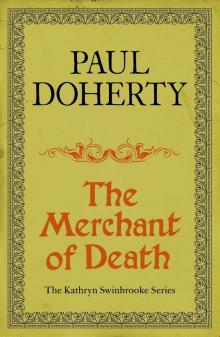 The Merchant of Death
The Merchant of Death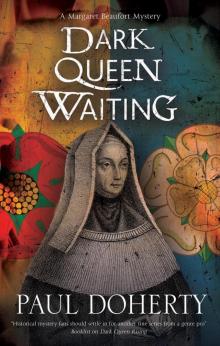 Dark Queen Waiting
Dark Queen Waiting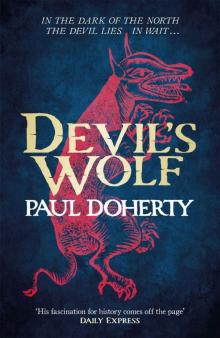 Devil's Wolf
Devil's Wolf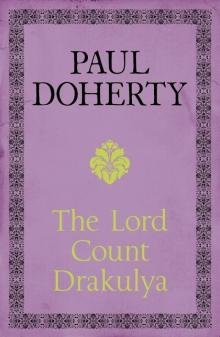 The Lord Count Drakulya
The Lord Count Drakulya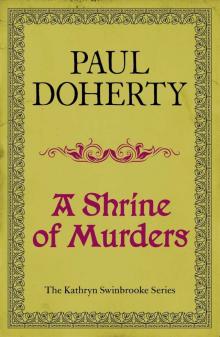 A Shrine of Murders
A Shrine of Murders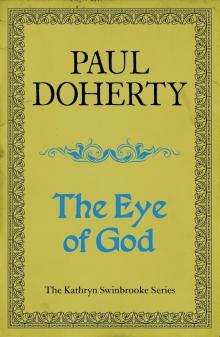 The Eye of God
The Eye of God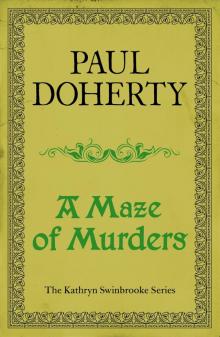 A Maze of Murders
A Maze of Murders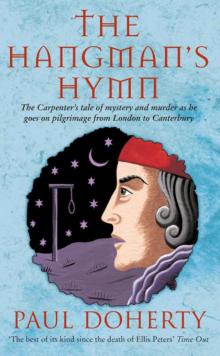 The Hangman's Hymn
The Hangman's Hymn The Godless
The Godless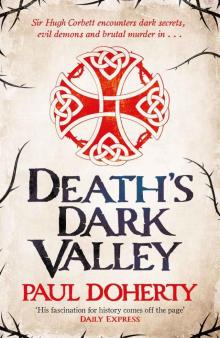 Death's Dark Valley
Death's Dark Valley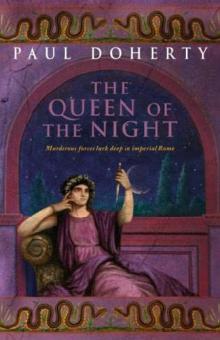 Queen of the Night ar-4
Queen of the Night ar-4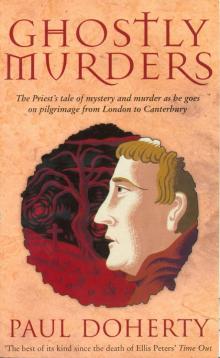 Ghostly Murders
Ghostly Murders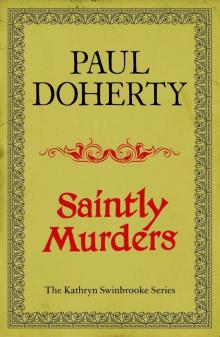 Saintly Murders
Saintly Murders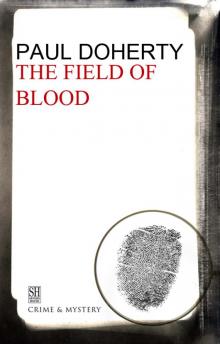 The Field of Blood
The Field of Blood Hugh Corbett 10 - The Devil's Hunt
Hugh Corbett 10 - The Devil's Hunt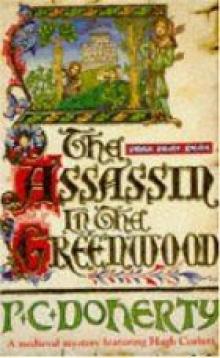 Assassin in the Greenwood hc-7
Assassin in the Greenwood hc-7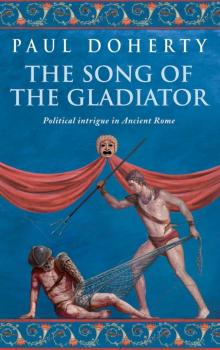 The Song of the Gladiator
The Song of the Gladiator Hugh Corbett 17 - The Mysterium
Hugh Corbett 17 - The Mysterium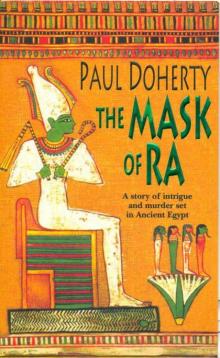 The Mask of Ra
The Mask of Ra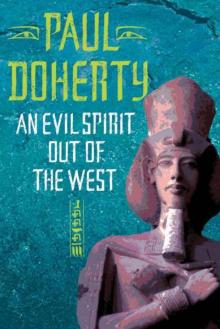 An Evil Spirit Out of the West (Ancient Egyptian Mysteries)
An Evil Spirit Out of the West (Ancient Egyptian Mysteries) Herald of Hell
Herald of Hell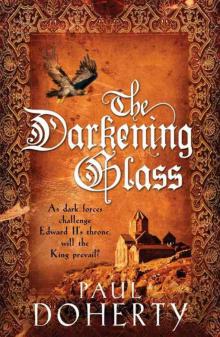 Mathild 03 - The Darkening Glass
Mathild 03 - The Darkening Glass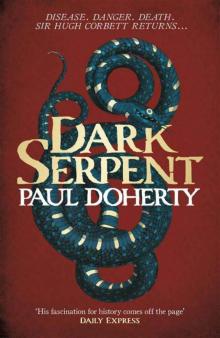 Dark Serpent (Hugh Corbett 18)
Dark Serpent (Hugh Corbett 18)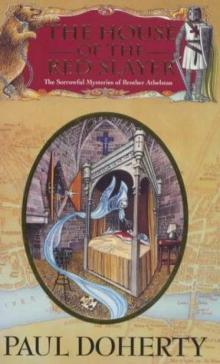 House of the Red Slayer smoba-2
House of the Red Slayer smoba-2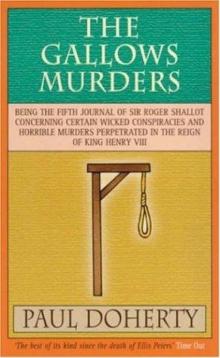 The Gallows Murders
The Gallows Murders The Straw Men
The Straw Men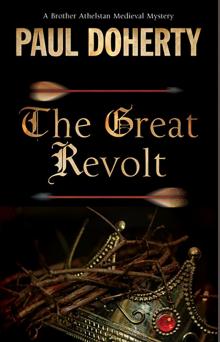 The Great Revolt
The Great Revolt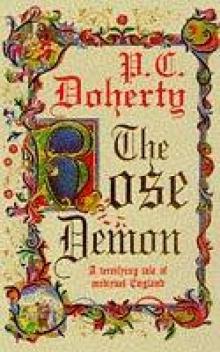 The Rose Demon
The Rose Demon By Murder's bright light smoba-5
By Murder's bright light smoba-5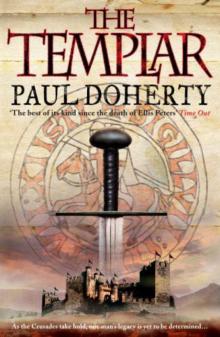 Templar
Templar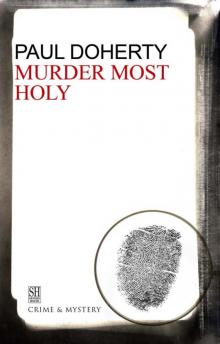 Murder Most Holy
Murder Most Holy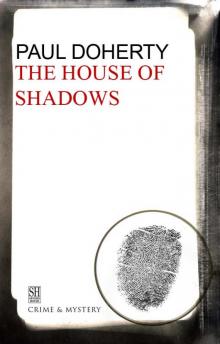 The House of Shadows
The House of Shadows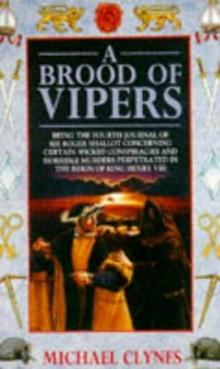 A Brood of Vipers srs-4
A Brood of Vipers srs-4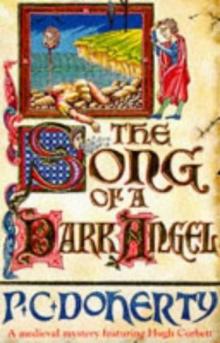 Song of a Dark Angel hc-8
Song of a Dark Angel hc-8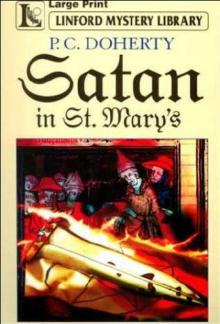 Satan in St Mary hc-1
Satan in St Mary hc-1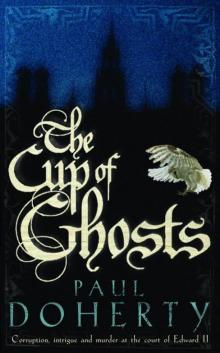 Mathilde 01 - The Cup of Ghosts
Mathilde 01 - The Cup of Ghosts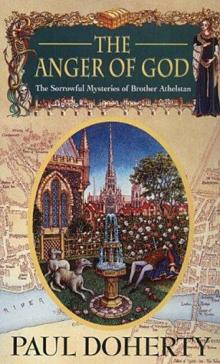 The Anger of God smoba-4
The Anger of God smoba-4 Isabella and the Strange Death of Edward II
Isabella and the Strange Death of Edward II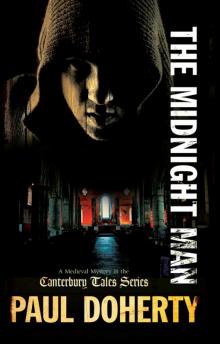 The Midnight Man ctomam-7
The Midnight Man ctomam-7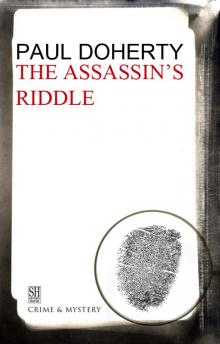 The Assassin's Riddle
The Assassin's Riddle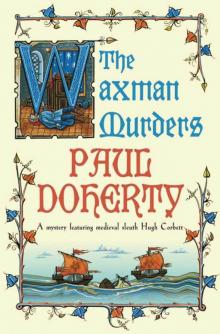 Hugh Corbett 15 - The Waxman Murders
Hugh Corbett 15 - The Waxman Murders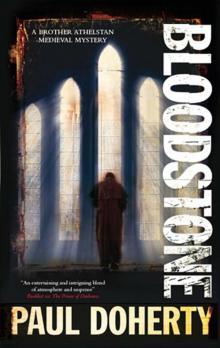 Bloodstone smoba-11
Bloodstone smoba-11 Bloodstone
Bloodstone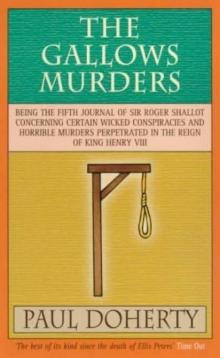 The Gallows Murders srs-5
The Gallows Murders srs-5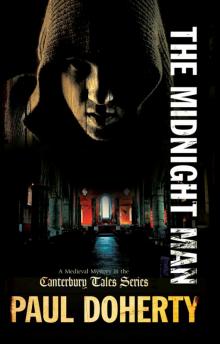 The Midnight Man
The Midnight Man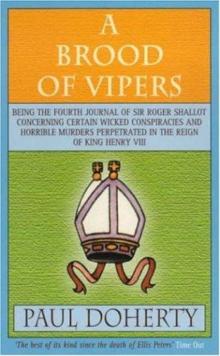 A Brood of Vipers
A Brood of Vipers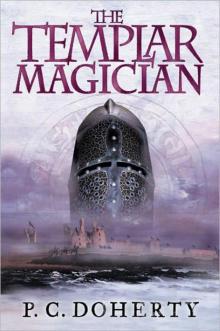 The Templar Magician
The Templar Magician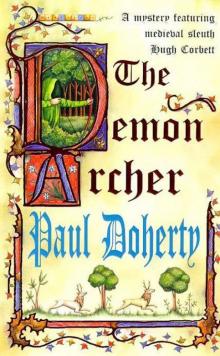 Hugh Corbett 11 - The Demon Archer
Hugh Corbett 11 - The Demon Archer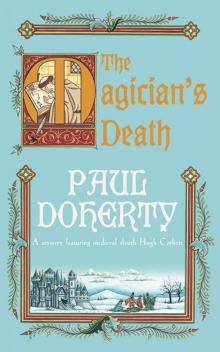 Hugh Corbett 14 - The Magician's Death
Hugh Corbett 14 - The Magician's Death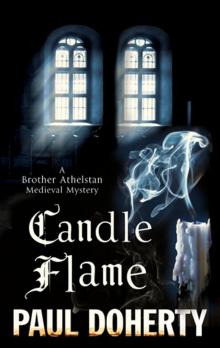 Candle Flame
Candle Flame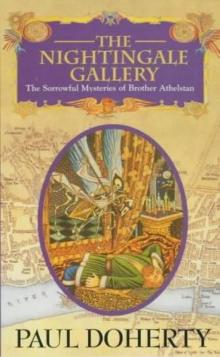 The Nightingale Gallery smoba-1
The Nightingale Gallery smoba-1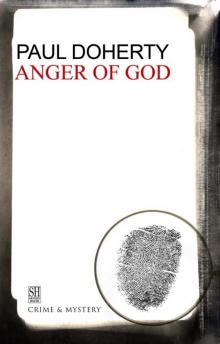 The Anger of God
The Anger of God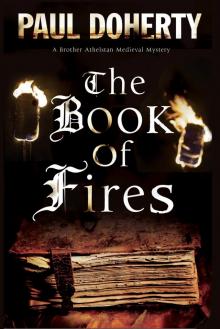 The Book of Fires
The Book of Fires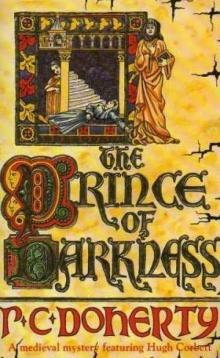 Prince of Darkness hc-5
Prince of Darkness hc-5 The House of Crows smoba-6
The House of Crows smoba-6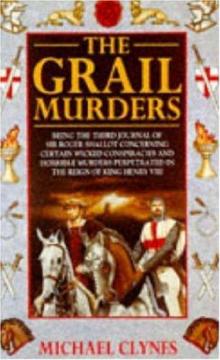 The Grail Murders
The Grail Murders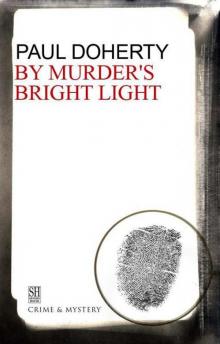 By Murder's Bright Light
By Murder's Bright Light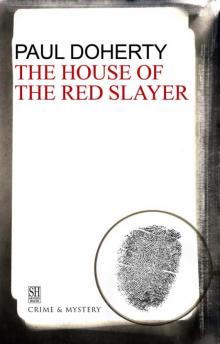 House of the Red Slayer
House of the Red Slayer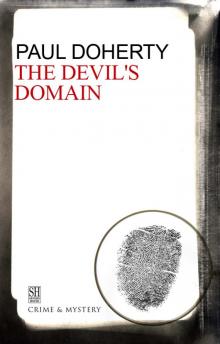 The Devil's Domain
The Devil's Domain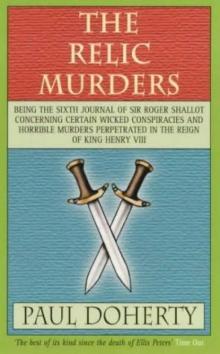 The Relic Murders srs-6
The Relic Murders srs-6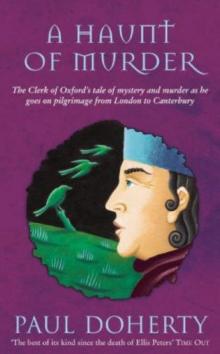 A haunt of murder ctomam-6
A haunt of murder ctomam-6 The Straw Men smoba-12
The Straw Men smoba-12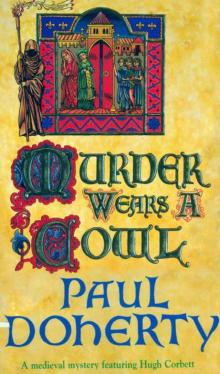 Hugh Corbett 06 - Murder Wears a Cowl
Hugh Corbett 06 - Murder Wears a Cowl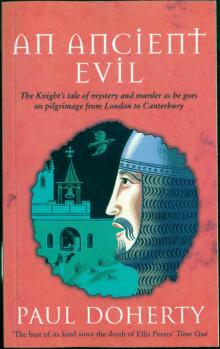 An Ancient Evil (Canterbury Tales Mysteries)
An Ancient Evil (Canterbury Tales Mysteries)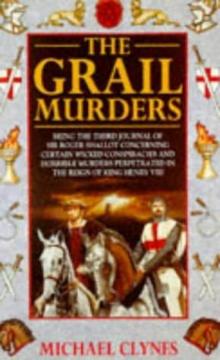 The Grail Murders srs-3
The Grail Murders srs-3 The Fate of Princes
The Fate of Princes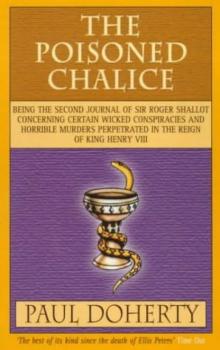 The poisoned chalice srs-2
The poisoned chalice srs-2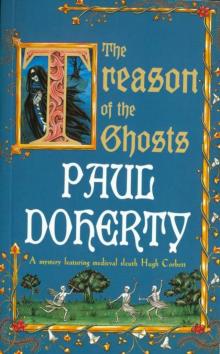 Hugh Corbett 12 - The Treason of the Ghosts
Hugh Corbett 12 - The Treason of the Ghosts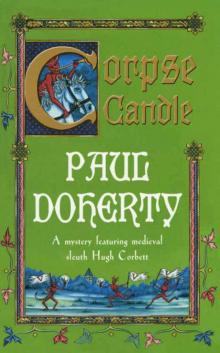 Hugh Corbett 13 - Corpse Candle
Hugh Corbett 13 - Corpse Candle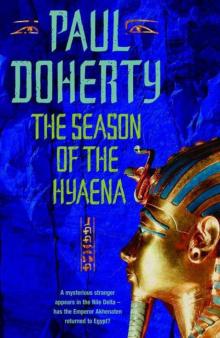 The Season of the Hyaena (Ancient Egyptian Mysteries)
The Season of the Hyaena (Ancient Egyptian Mysteries)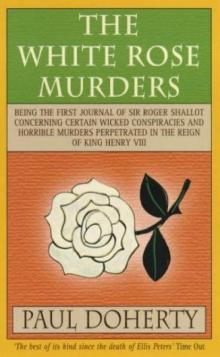 The White Rose murders srs-1
The White Rose murders srs-1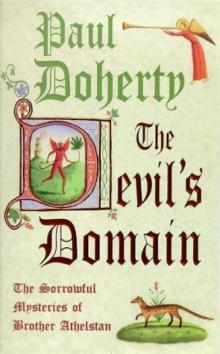 The Devil's domain smoba-8
The Devil's domain smoba-8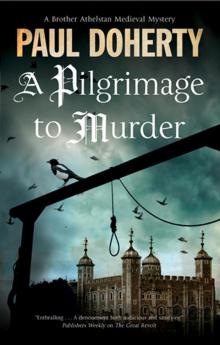 A Pilgrimage to Murder
A Pilgrimage to Murder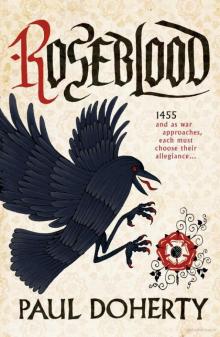 Roseblood
Roseblood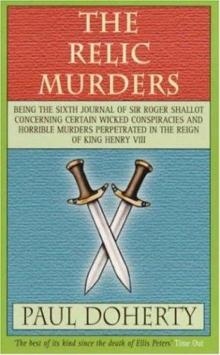 The Relic Murders
The Relic Murders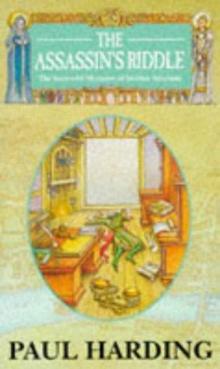 The Assassin's riddle smoba-7
The Assassin's riddle smoba-7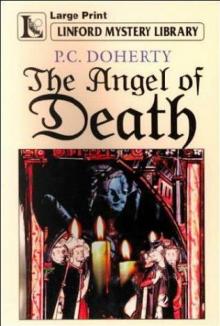 Angel of Death hc-4
Angel of Death hc-4 Dark Queen Rising
Dark Queen Rising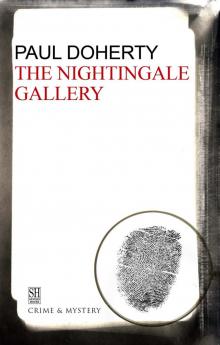 The Nightingale Gallery
The Nightingale Gallery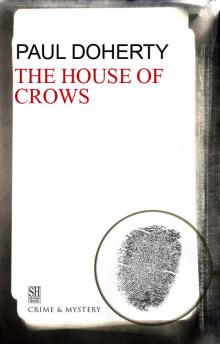 The House of Crows
The House of Crows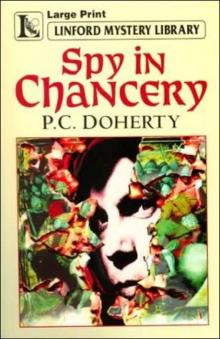 Spy in Chancery hc-3
Spy in Chancery hc-3